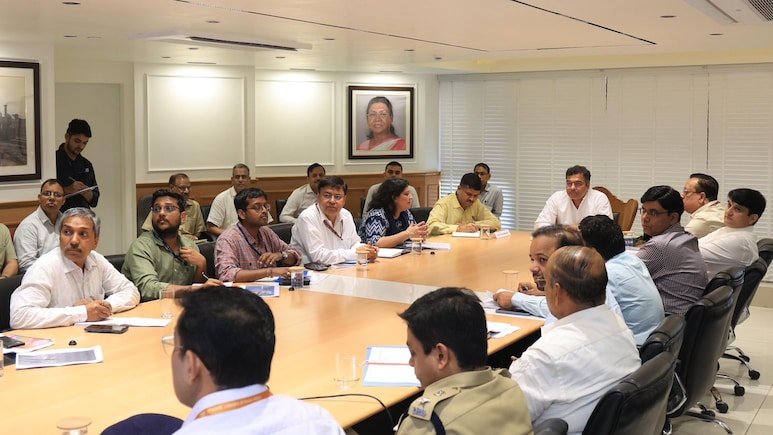
The government has rolled out a safety-first model for Delhi's newly inaugurated Urban Extension Road-II (UER-II), barring two-wheelers, autos, and slow-moving vehicles from the high-speed corridor. The decision, taken at a high-level Coordination Committee meeting chaired by Minister Parvesh Verma, comes with a larger push for surveillance, patrolling, service roads, and permanent drainage planning.
Prime Minister Narendra Modi had inaugurated the 76-km UER-II on August 17, calling it Delhi's third Ring Road, along with the 29-km Dwarka Expressway. The ₹8,000-crore corridor, built under the National Highways Authority of India (NHAI), is designed to connect Alipur to Mahipalpur through Mundka, Bakkarwala, Najafgarh, and Dwarka, significantly cutting travel time from Indira Gandhi International Airport to NCR cities.
'Two-Wheelers Will Not Be Allowed'
Minister Verma stressed that safety would remain the top priority on the expressway.
"Two-wheelers, three-wheelers, and slow-moving vehicles will not be allowed on the main carriageway as their entry could lead to serious accidents," he said.
He directed the Delhi Traffic Police to enforce the restriction "strictly" and ensure awareness through signage, public announcements, and awareness drives.
Round-the-Clock Vigil
The minister also announced extensive security and emergency measures for the corridor.
"UER-II is not just another road; it is a high-speed lifeline for Delhi. We are committed to ensuring that commuters get world-class infrastructure without compromising safety. Restrictions on unsafe vehicle movements will be strictly enforced, and surveillance and emergency response systems will remain active round the clock," Verma said.
Officials confirmed that CCTV cameras, adequate manpower, patrolling vans, and ambulances will be deployed at regular intervals.
Service Roads and Drainage Fixes
Verma directed NHAI to construct service roads "immediately" so that residents in adjoining areas have smooth access to UER-II. He said this would improve local connectivity and ensure better traffic management.
On drainage, the minister was categorical that a permanent plan was needed.
He pointed to Karala-Kanjhawala Road, Mundka-Karala Road, and Barwala as vulnerable points and said: "The drainage plan should be permanent, not temporary, to avoid repeated waterlogging issues."
The Delhi Jal Board informed the meeting that the shifting of the water pipeline at Nangli Sakrawati, a critical project hurdle, has been completed.
Power and Infrastructure Push
Taking up power supply issues for Package 5, Verma instructed BSES to fast-track the installation of transformers. He also asked NHAI to coordinate with the India International Convention Centre (IICC) to ensure smooth execution.
Multi-Agency Coordination
The meeting was attended by senior officials from NHAI, Delhi Traffic Police, PWD, BSES, Delhi Jal Board, Environment Department, MCD, Revenue Department, and Power Department, with the agenda of removing bottlenecks and accelerating work.
A High-Speed Corridor for Delhi
Officials underlined that UER-II, as a four-to-six-lane expressway, will play a critical role in decongesting Delhi's traffic and improving regional connectivity.
With bans on unsafe vehicles, strict enforcement, and new service and drainage infrastructure, the government says the corridor is being positioned not just as a road, but as a world-class high-speed lifeline for the Capital.
Track Latest News Live on NDTV.com and get news updates from India and around the world

